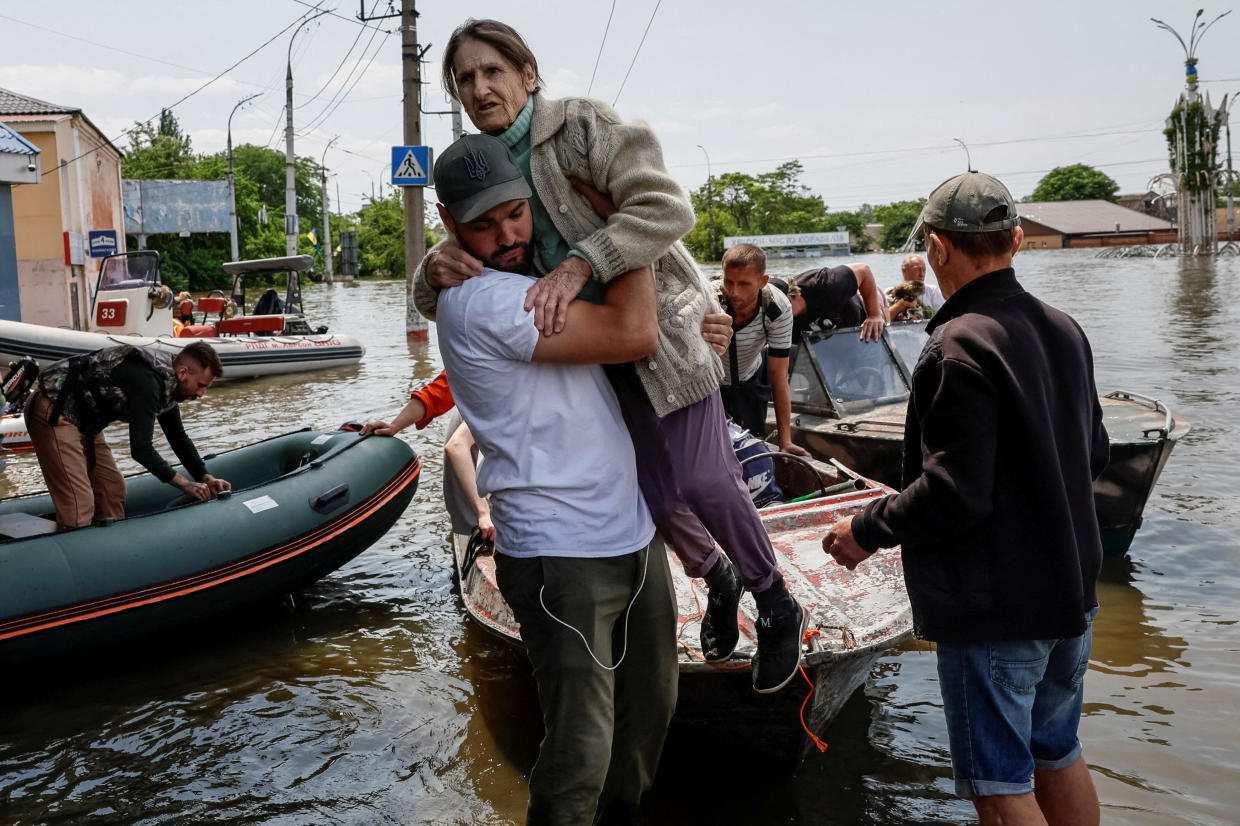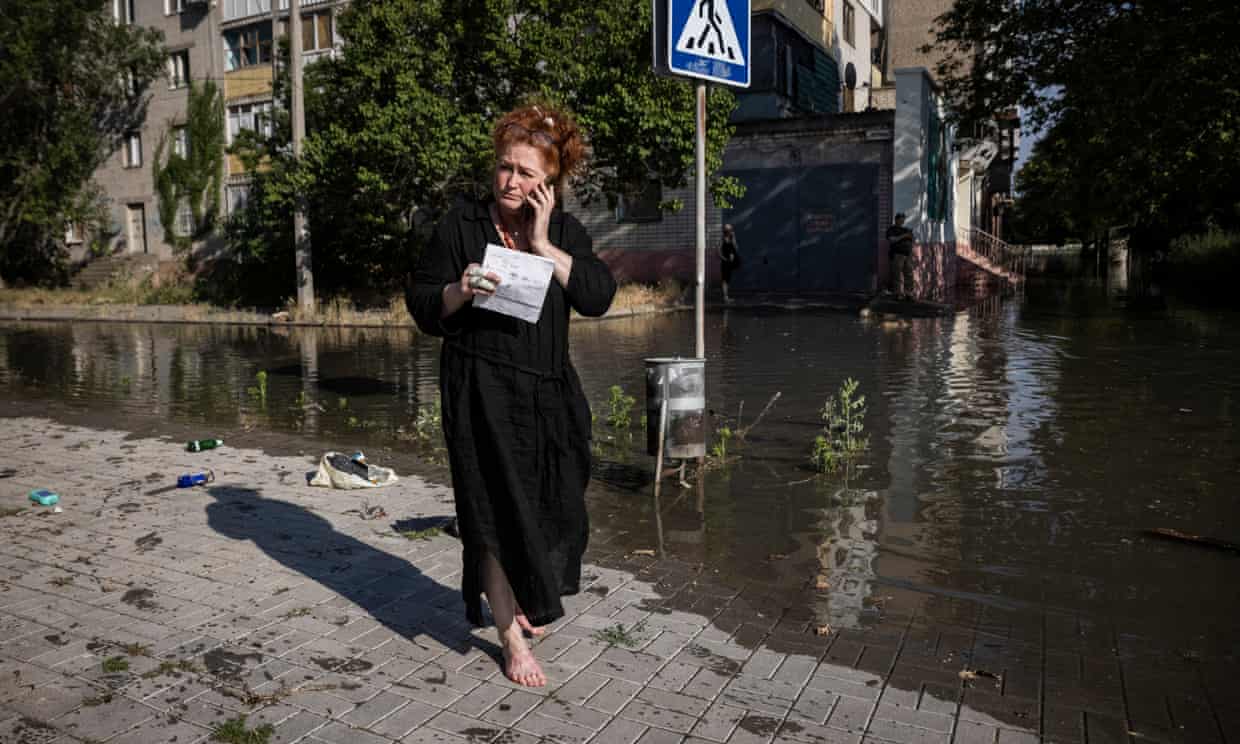The collapse of the Nova Kakhovka dam wrecked havoc on the civilians, infrastructure, and the natural environment around the Dnipro River. Describing the catastrophe, Ukrainian President Volodymyr Zelensky labeled the explosion as an “environmental bomb of mass destruction.”
The floods washed out towns, cities, and agricultural areas. Mines from nearby battlefields were washed into the floodwaters, creating a new hazard for evacuating civilians. Industrial-grade chemicals and oil from nearby power plants have also leaked into the water, causing extensive ecological damage. 150 metric tons of oil have thus far leaked into the Dnipro; even just one liter of oil can contaminate 1 million liters of water [3].
The map below demonstrates the extent to which the floodwater from the Dnipro river has reached the surrounding areas downstream of the dam.

Volunteers help to evacuate residents from a flooded area after the Nova Kakhovka dam was destroyed amid Russia's ongoing invasion of Ukraine, in Kherson, southern Ukraine, June 8, 2023. [Alina Smutko/REUTERS]
The evacuation of Kherson by the Ukrainian government and humanitarian organizations began almost immediately after the dam was destroyed. However, the evacuation was complicated by Russia’s continued occupation of Ukrainian territory.
Boats evacuating the citizens of Kherson on June 7th and 8th came under fire from Russian artillery, killing a number of civilians and humanitarian workers. People struggled to escape the floodwaters, as Russian forces had confiscated the vast majority of boats in November when they retreated across the left bank of the river [4].
Videos posted to social media the day of the attack demonstrate the challenging new reality faced by Ukrainian citizens south of the dam. Ukrainians took to social media to post videos of washed out roads, evacuation boats under fire, and stranded animals. You can engage with their stories, which are geolocated on the map below.
Click on points on the map to see geolocated videos of the flooding in Kherson posted to social media.
/cloudfront-us-east-2.images.arcpublishing.com/reuters/SUN5IQSQIBOT3K3C6Q3FVOXRBA.jpg)


